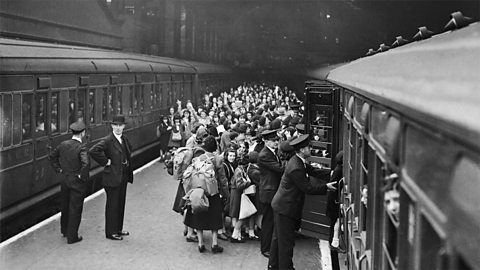Evacuation
The Government also took action to ensure the safety of as much of the population as possible. Children, and to a lesser extent families, were evacuated from industrial cities to the countryside. It was thought they would be safe from aerial bombing there.

Those living in the countryside saw an influx of women and children. Many of these children would stay with middle and upper class families.
Many were surprised and shocked by the conditions of the people arriving from the industrial cities, especially the children.
City children often had poor clothing and were sometimes dressed in rags. They suffered from developmental illnesses such as polioA viral infection that used to be common worldwide. It affects humans, spreading in areas of poor sanitation and through close contact with infected people. Symptoms can include fever, meningitis and paralysis. It is now preventable through vaccination. and ricketsA disease caused by lack of vitamin D in the diet. Symptoms include soft and deformed leg bones.. They were often poorly educated and had suffered from a lack of clean air.
Evacuation helped to change attitudes because it meant that working class children mixed with more affluent families. It highlighted the severe poverty that still existed in cities after the reforms of the early 1900s. Upper and lower class citizens were brought closer together.